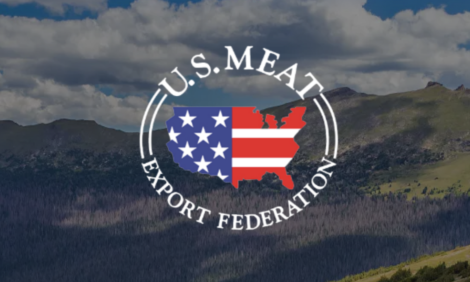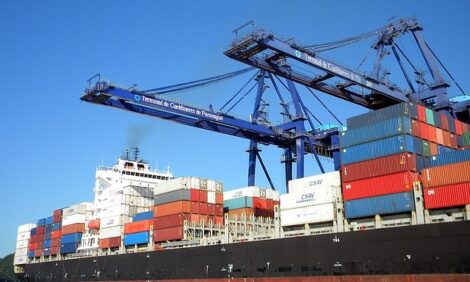



Exceptional Calf & Store Cattle Prices This Autumn
NORTHERN IRELAND, UK - Rising input costs have been a significant issue for beef producers over the course of the last three years. Concerns about the price of fuel, feed and fertiliser have been prominent and these rising costs have eaten into any benefit to producers of improved farmgate prices.For those producers buying store cattle, weanlings or calves in 2011, the cost of livestock has also risen sharply.
While this is positive news for primary producers, it is obviously a source of concern to finishers, particularly given that most finishers cannot be sure what price they will receive at the point of slaughter.
Table 1 shows average beef mart prices reported to DARD in the week ending 17 September 2011 compared to the corresponding week last year.
The report clearly shows how prices have changed over the course of the last year. The price of lighter (150-300kg) store steers and heifers is around 30 per cent higher than the same week last year.
Steers in that weight bracket are averaging £536/head liveweight, with heifers of the same weight averaging £509/head. The average price of heavier animals is also significantly higher than last year.
Steers and heifers between 400-500kg liveweight are now averaging around £760/head. In the case of steers this is 16 per cent more than last year, with heifer prices up by 18 per cent.
Heavier store cattle (over 500kg) are about 20 per cent more expensive than last year.
Figures 1 and 2 clearly illustrate the trends in store prices (300-400kg steers and heifers) over the last three years.
Supply is one driver of this situation. The June Census showed that the number of cattle on the ground aged one to two years (intended for slaughter) is down by five per cent.
A similar situation prevailed last autumn with reduced numbers of NI origin cattle on the ground (although more imported stores from ROI meant that numbers remained reasonably steady last year) and more being paid for store cattle in the ring.
The logic of paying such high prices for stores was questioned last autumn, but was justified to a certain extent (relative to previous year levels and notwithstanding the general lack of profitability) by higher farmgate prices at slaughter.
This time last year there were anecdotal reports of producers expecting strong prices for contract heifers for the Christmas market and for the new year.
Producers without access to such forward contracts were buying on-spec in the hope if not the expectation that the trade would live up to its billing.
The trade met expectations in Christmas 2010 and throughout the first half of 2011 and while profitability remains in question, those producers that had invested in relatively expensive store cattle last Autumn and fed them over the winter, were rewarded with an improvement in finished cattle prices.
The question for producers now is whether history will repeat itself in 2011/12. Finishers will feel that a further increase in deadweight prices will be required to cover the greater costs they have incurred in buying livestock.
We cannot be certain whether or not favourable forward contracts are fuelling demand around the rings and are another driver of the strong store trade. Regardless, there is an element of speculation involved in winter feeding / finishing, particularly for those that are not dealing in large volumes of stock and don’t have strong relationships with factories or killing on contract.
In an enterprise where the margins are extremely tight, the risks associated with winter finishing are significant.
The increases in finishing costs and bought-in livestock prices mean that these risks are becoming even greater. As input costs rise, working capital requirements also increase and to maintain the same level of output, producers reliant on overdrafts or business loans to fund their business may have had to borrow more heavily in recent years.
Given the speculative nature of the beef trade at times this is something that represents a growing risk in the industry.
Cormac McKervey, Head of Agriculture at Ulster Bank says that lenders recognise that the greater level of working capital and risk associated with these higher store prices is a significant issue.
When it comes to financing producers in the market for store cattle, he says that they judge every case on its own merit.
Mr McKervey says where producers have some level of understanding with factories whereby they expect to maintain their margins and the bank is comfortable with the producer’s position, they are prepared to assess a higher level of borrowing to allow farms to run the same level of throughput.
However, he also says that in some situations, the bank has not been prepared to facilitate a greater level of borrowing and may instead offer to restructure loans or overdrafts to provide producers with a greater degree of flexibility.
Some producers may also calculate that the risk involved has become too great and may instead decide to scale back their enterprise.
Essentially producers will work out themselves how they want to handle the greater level of risk involved in dealing in more expensive stock. Overall however, rising store, weanling and suckler calf prices are to be welcomed generally.
Profitability at primary producer level remains in question, but higher prices have encouraged greater activity with a four per cent increase in suckler cow numbers this year.
Further Reading
| - | You can view the full report by clicking here. |
TheCattleSite News Desk


